When is it Too Late to Plant Hydrangeas?
If planting hydrangeas is on your gardening to-do list this year but you are wondering if you are too late in the season, you have come to the right place! In this article, hydrangea enthusiast Jill Drago will lay out when it is too late to plant your hydrangeas and when the best time to plant is.
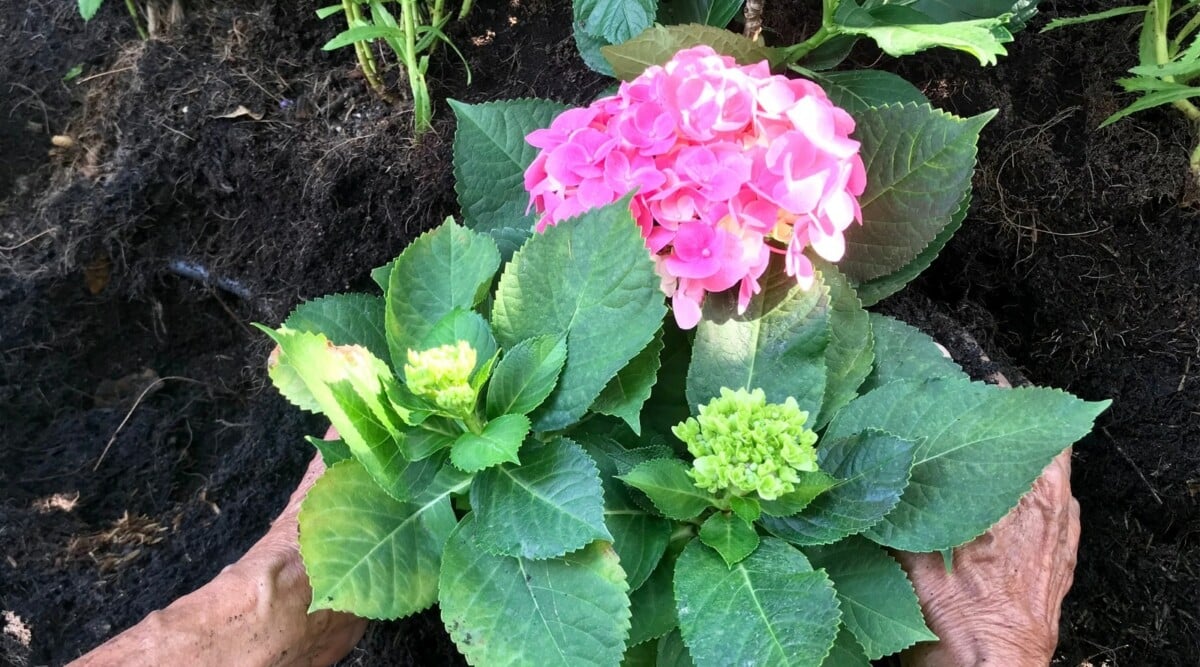
Contents
With spring nearly over the hydrangea season is upon us. Garden centers are busting at the seams with these gorgeous shrubs just begging for you to take them home. Hydrangeas easily beautify your garden with their large flowers and attractive foliage. There are different species for every spot in your garden from full sun to deep shade. Each species offers its own unique yet stunning appeal for your gardens.
As the temperatures begin to rise it can become tricky to install larger shrubs into your garden without running into drought or heat stress issues. This can cause the shrub to appear unattractive, lose its leaves, or unfortunately die if it is not cared for as it needs to be.
So when is the best time to plant hydrangeas? Or more importantly, when is it too late in the year to get these blossoming beauties in the ground? Keep reading to find out when you should be planting your hydrangeas depending on where you live.
The Short Answer
The best times to plant hydrangeas are in the spring or in the fall. The cooler temperatures allow them to acclimate appropriately without having to struggle with any extreme weather conditions, whether that is cold or heat. Of course, these timelines will shift a bit depending on where you live and what the climate is like.
In the spring, I suggest getting them in the ground before the end of June. In the fall I suggest planting in September or October. Once the frost begins to set in your hydrangea will not have ample time to take up water and get comfortable in its new home before going dormant.
The Long Answer
There are perks to both planting in the fall and spring. In the fall, your hydrangeas will have quite a long delay before they will begin to pump out their blossoms, giving your shrubs a good amount of time to get ready for the show.
The springtime gives active gardeners more time to keep their eye on their hydrangeas throughout the growing season to ensure they are well-watered and growing happily in their new homes.
Planting By Hardiness Zone
Each zone has a bit of a different timeline for ideal planting times. Below is a more in-depth look at the zones you may live in, with some planting timeline tips.
Hardiness Zones 3 and 4
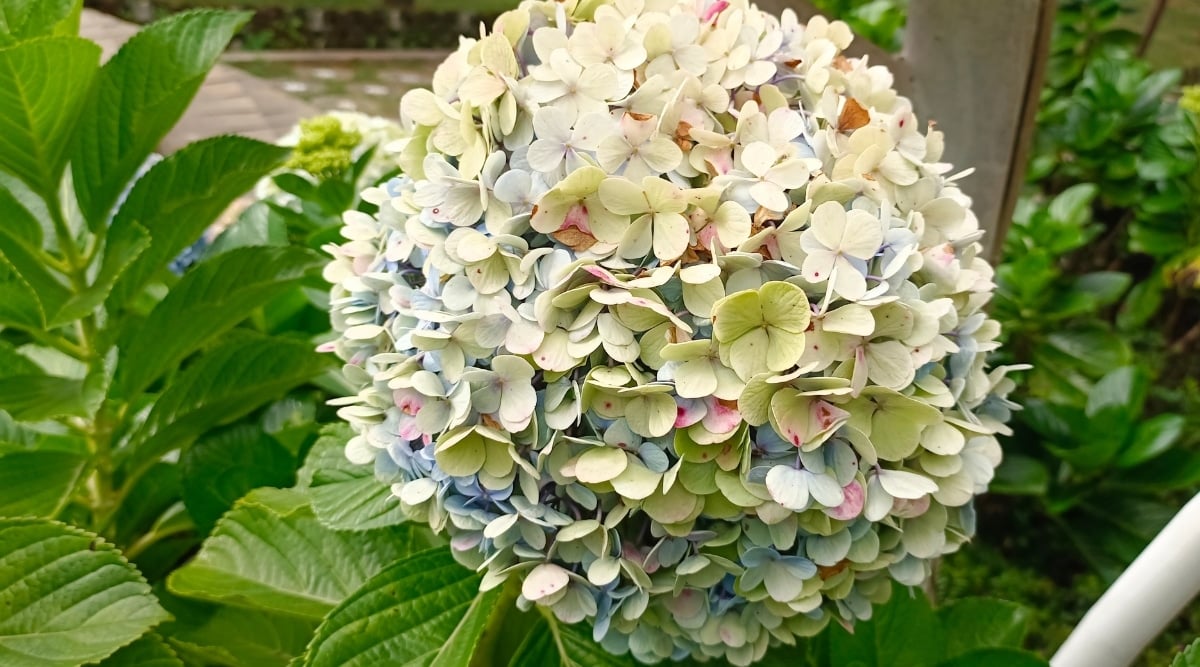
Growing seasons in hardiness zones 3 and 4 are short and create a few obstacles for gardeners, but they can be navigated easily with some of planning.
With the last frost not arriving until mid-May and the first frost showing up in mid-September, you only have about 4 or 5 months of ideal planting weather.
The good news is that the summer highs are comfortable for planting, and you do not need to rush to get them in the ground before summer arrives. Aim to get your hydrangeas in the ground no later than early September!
Hardiness Zones 5 and 6
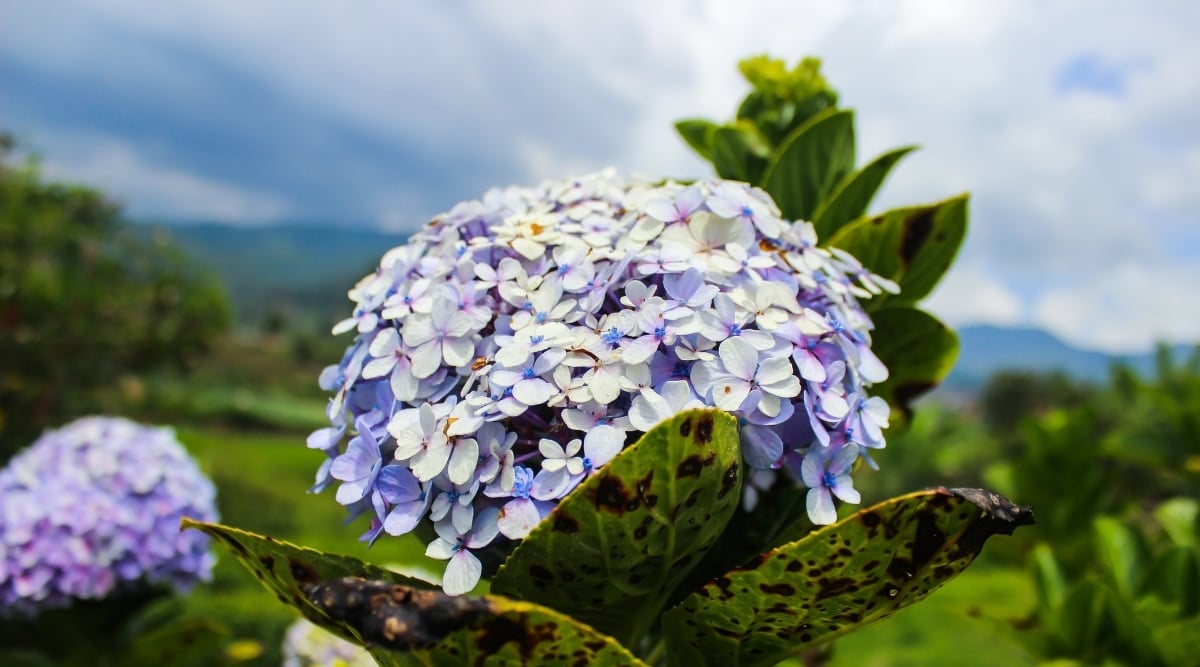
These moderate hardiness zones are where hydrangeas are happiest, but the planting timeline is a bit tighter here. The last frosts in zones 5 and 6 occur in April, while the first frosts hit mid-October.
In the springtime, you can begin planting once your ground has fully thawed. You can genuinely plant throughout the summer in these hardiness zones, but you need to be fully prepared to stay on top of watering your plants throughout the summer.
Fall is an excellent time to plant your in hardiness zones 5 and 6. Aim for getting your shrubs in the ground by early September, so they have enough time to adjust to their new home before winter settles in.
Hardiness Zones 7 and 8
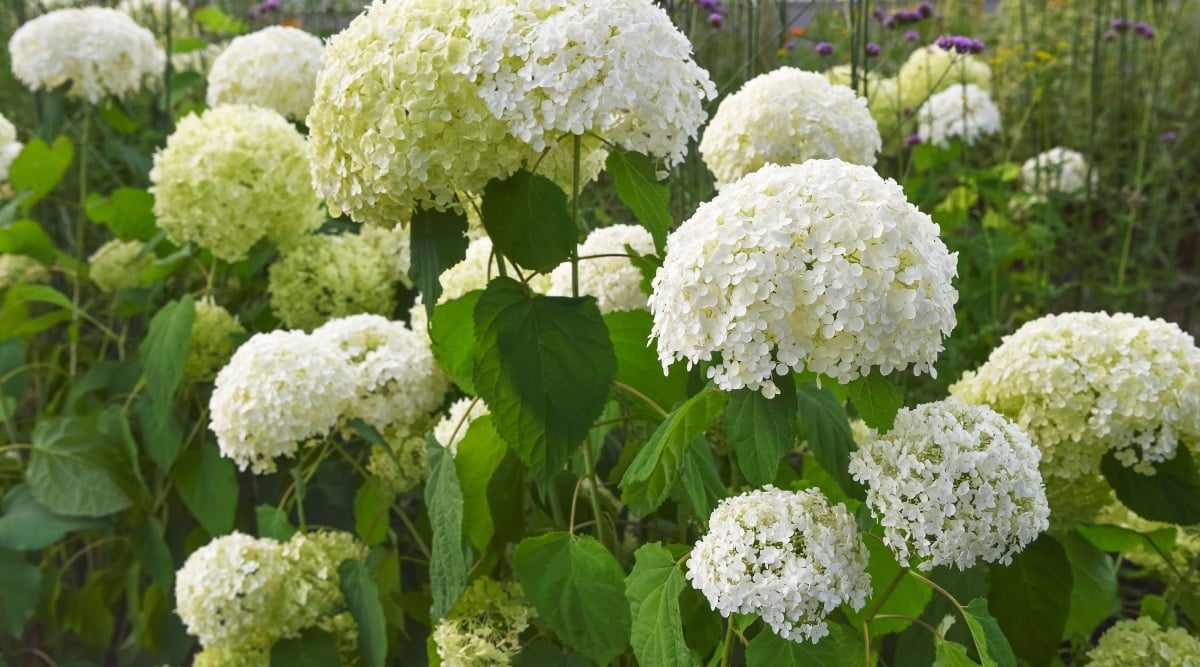
Zones 7 and 8 are pretty different from each other, but they have similar growing seasons. These two zones are found in the Pacific Northwest, the South, and the central United States. These zones have a last frost in the middle of March and their first frost around the end of October or early November.
Even though the summers are hot in these zones, you will still want to be focused on the frost dates when you are planting.
Try to avoid planting in July and August for the best results. If you choose to plant in the fall, try to get your hydrangeas in the ground about 8 weeks before your average first frost. This should land somewhere around early to mid-September.
Hardiness Zone 9

This is a large and hot growing zone that takes up most of the southern states on the Gulf of Mexico and part of northern California. The average low temperatures of this zone range from 20-30 degrees. The last frost is in early February, and the first frost is in late November, which creates a very long growing season.
The key to growing successful new plantings in hardiness zone 9 is staying away from the heat during planting time. Summertime planting should be avoided. Plant in March or October for the best results.
Hardiness Zone 10

Hydrangeas will grow a bit differently in zone 10. There is typically no frost in this area, making it an endless growing season. This does not mean that it is a planting free-for-all, especially when it comes to these temperature-sensitive shrubs.
When you are selecting a planting site in hardiness zone 10, you will want to make sure your shrubs will be getting enough shade to withstand the heat.
Zone 10 has some of the hottest temperatures in the U.S. and takes up areas in southern Florida and southern California.
Fall is the best time to plant in hardiness zone 10. This will allow your plants plenty of time to acclimate before blooming. Plant before May to ensure that they do not suffer from heat stress.
What Happens if I Plant Too Late?
If you missed your timeline for planting and have hydrangeas in nursery pots hanging out in your yard, do not worry – you still have options.
Summer Planting
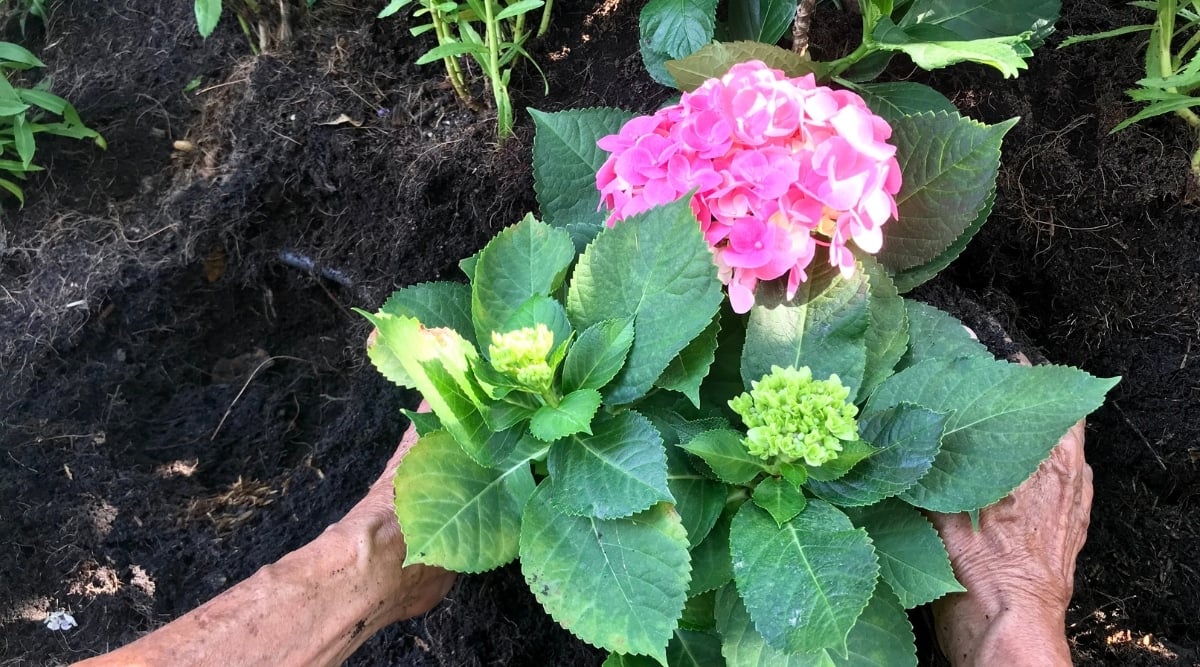
Planting in the summer heat is not ideal for any plant, but it is possible. Hydrangeas will likely be in full bloom all summer, so mentally prepare yourself for losing this season’s flowers or at least having a less-than-ideal summer of flowers.
Once they are planted nicely in the ground, you must focus your attention on water. Water, water, water. Hydrangeas are not known for being drought tolerant. We often find our hydrangea leaves drooping toward the ground on hot summer afternoons.
Do not worry; you can do this. If you notice your leaves drooping, get out there and water! They will benefit from a deep soaking a few times a week rather than a daily sprinkling. Leave your hose on the ground near the base of your hydrangea and let your plant take a healthy drink.
Overwintering Potted Hydrangeas
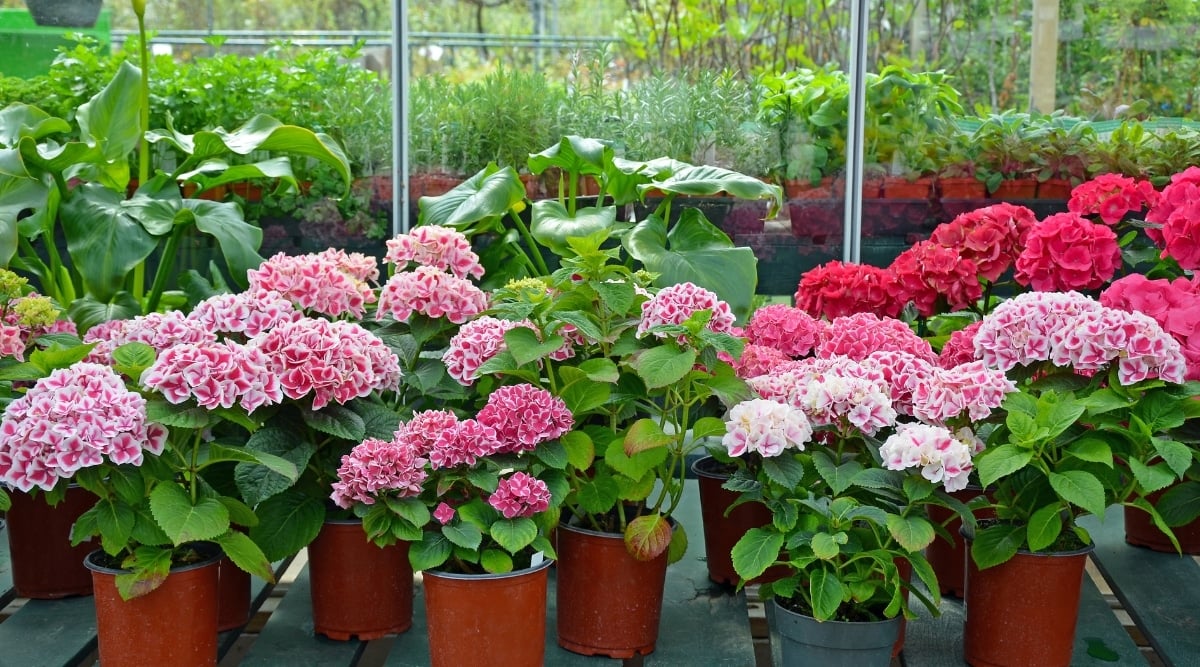
Did you miss your planting window? Maybe you grabbed some hydrangeas from your favorite garden center at a last-minute sale and ran out of time to get them in the ground.
Either way, this is not the end of the world. They overwinter beautifully if they are given the right conditions. You will need to protect your hydrangeas from the extreme elements while allowing them to experience the cooler temperatures that the winter brings.
Depending on what your hydrangea is growing in, you may want to put it into a growing bag or container with a little bit more insulation, such as straw or leaves.
This will protect the root system just enough. Keep your potted hydrangeas in a garden shed, garage, or basement. This way, they start their growth cycle where temperatures are cool, but the stalks and roots will not be overexposed to hard frosts or snow.
On the other hand, you do not want your hydrangea to be exposed to warm temperatures for too long. This will confuse the hydrangea and cause it to push growth which the cold temperatures will likely damage.
When spring arrives, slowly acclimate your hydrangea to the outdoor elements before planting it in the ground. Begin watering the potted hydrangea. Keep the pots outdoors for a few weeks before you plant the shrub in its new home.
Final Thoughts
The main takeaway here is that hydrangeas are resilient plants. Yes, there are definitely times when you should not transplant your hydrangeas throughout the year.
However, in many cases, you have a green light just as long as the ground is not frozen solid. You will need to have your hose and patience at the ready. Try not to stress; these plants are tougher than they seem.
Share This Post

Moving Hydrangeas: When and How to Transplant
Are you thinking of moving your hydrangeas around this season? Perhaps you are thinking of taking them out of containers and relocating them to somewhere in the ground? In this article, gardening expert and hydrangea enthusiast Jill Drago walks through her top tips for transplanting hydrangeas!

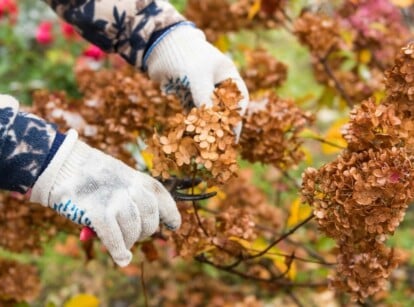
When Should You Prune Hydrangeas?
Do you need to prune your hydrangeas, but aren't sure if it's better to prune them in the spring or the wintertime? Picking the perfect time to prune them can be the difference between full or failed blooms come summertime. In this article, gardening expert and hydrangea enthusiast Jill Drago examines the best time of year to prune your hydrangeas.

How Big Will Hydrangeas Grow When Fully Mature?
Curious to know how big your hydrangeas will grow when fully mature? While this will depend on many factors, including the type of hydrangea you grow, there are some basic characteristics of this popular shrub. In this article, gardening expert and hydrangea enthusiast Jill Drago examines the typical hydrangea size by species, with a comprehensive growth chart for each.

How to Revive a Dying Hydrangea Plant
If your hydrangea looks like it might be dying, there could be several different causes that contribute to its poor health. In this article, gardening expert and hydrangea enthusiast Jill Drago examines the most common reasons for a dying hydrangea, and how to revive it once it's started to die off.

11 Tips For Growing Hydrangeas as Hedges
Are you thinking of adding hydrangeas as a flowering hedge in your garden this season? Despite what you may have heard, hydrangeas can make great hedges if you pick the right variety. In this article, gardening expert Jill Drago shares her top tips for planting hydrangeas as hedge plants this season.

What Side of Your House Should You Plant Hydrangeas?
Trying to figure out what side of the house to plant your hydrangeas this season? Depending on where you plant them, plant placement can make or break your plants. In this article, gardening expert and hydrangea enthusiast Jill Drago looks at the sides of your house that get the best type of sun exposure for hydrangeas.

11 Hydrangea Care Myths Gardeners Shouldn’t Ignore
Are you confused by some of the gardening advice you get each season with your hydrangeas? In this article, gardening expert and hydrangea enthusiast Jill Drago takes you through some of the most common hydrangea care myths you'll encounter while growing them in your garden.

